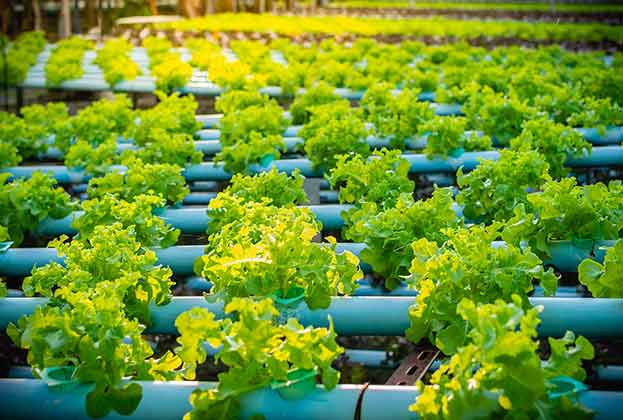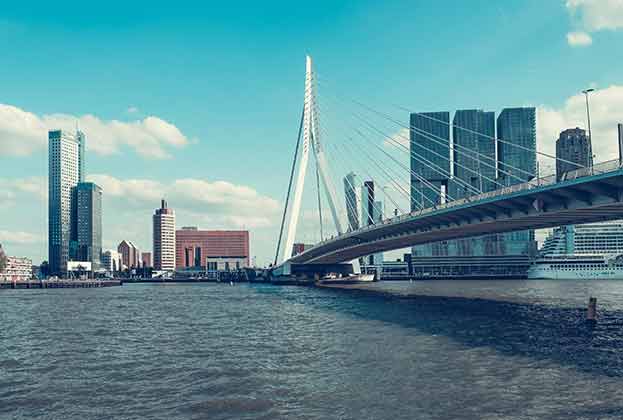With the margins on offer and the ability to optimise growing conditions, even small improvements can produce major advantages in productivity returns. These are the key issues to consider in planning a CEA investment
Energy
Controlling growing conditions is energy intensive. Lighting, heating and water pumping costs are required to maintain optimum growing conditions, and these have to offer a return over and above the use of natural light and outdoor irrigation or rain-fed systems. Creating the optimal micro-climate through cooling, dehumidification and carbon dioxide control uses energy but enhances yields, and the smartest CEA systems automatically adjust internal conditions in response to external changes in sunlight levels and temperature.
Utilising waste resources reduces input costs, but also enhances the positive image of associated brands
Savills Rural Research
Research shows that in the worst case scenario, energy costs can account for two-thirds of variable costs, but there are ways of offsetting this. Investing in efficient LEDs reduces both lighting costs and cooling costs as less waste heat should be produced by more efficient systems. Co-locating with any industrial system producing waste heat and carbon dioxide, such as an AD plant, internet server or a boiler room in a commercial property is advantageous. Utilising waste resources reduces input costs and enhances the positive image of associated brands.
Labour
CEA offers a number of labour advantages over field systems. Firstly, automation offers an increasingly attractive solution to labour-market challenges, as outdoor work in variable conditions becomes less desirable for the migrant workers who have been relied on. Field conditions can be very tough on robots, and although high humidity glasshouses are also not ideal, conditions are at least consistent.
Secondly, growing and processing equipment in CEA systems can account for around 45% of establishment costs, so designing this to get the most from your labour or automation system is crucial and a major opportunity to be more efficient than field systems. Treating the CEA facility as a manufacturing process can create an efficient layout and the opportunity to standardise workflows to maximise output.
In all situations, progressive employers need a clear strategy to attract and retain reliable, capable workers with the correct skills and knowledge. Vertical farming is a new industry so this can be more difficult than it seems.
Technology
Technology is the modern solution to any problem. However, technological solutions must be applied with due consideration. Automation, for example, could replace the need for pickers and graders for produce. But it is only part of the solution and most systems will still require a bespoke solution at substantial capital outlay, as well as the need to have technicians to operate and maintain the system.
The scale required to justify the investment may need several growers to come together to fund the innovation. For most CEA systems, marginal improvements in productivity will be justified due to the exclusion of normally uncontrollable climatic variables. Sensors and software to automate the growing environment according to the needs of the crop can therefore present a beneficial return on investment, whereas in field systems these investments are questionable.
To succeed over conventional production, vertical and urban farming rely on maximising technology. Do not shy away from spending where the benefits are proven, such as more efficient LEDs or CO2 enrichment.
Rent
Rental levels for warehouse space vary dramatically across the country. Savills research shows that inner London areas such as Park Royal would command rents of at least £15.50 per sq ft, whereas areas around the Midlands would achieve £6.50 per sq ft. The Midlands is the UK supply chain’s “Golden Triangle” where many of the major grocers locate their national distribution centres, so building next to one makes much more sense.
Similarly, a rural location benefiting from an AD plant could potentially offset energy costs, but most barns are not suitable for conversion to high-grade CEA systems. That being said, including a vertical farm in an existing urban location can be worthwhile. Given the flexible nature of the technology, a modular unit can be set up on a rooftop, in a basement or somewhere in between. This way the building enhances its use of space and excess heat can be used to further offset energy costs and meet corporate social responsibility obligations.

Outlook for vertical farming
Vertical farming is still a fledgling industry. Investors should be cautious of unnecessary capital investment and flawed business models. However, the industry is already worth around £1.5 billion globally and is predicted to grow to around £8 billion by 2025. The majority of investment has been in improving technology as opposed to setting up operational and well established businesses.
A focus on climate adaption, food security and resource efficiency is likely to drive more demand for CEA systems over outdoor cultivation, producing some clear winners and losers in business models and service providers. Early adopters need to keep a clear eye on markets and returns on investment in considering diversifying into CEA, whereas landlords looking to partner with a CEA tenant need to ensure that the business has a good understanding of costs and supply chains. Either way, a robust and well considered venture is the ultimate key to success.
Read the articles within Spotlight: Controlled Environment Agriculture below.
.jpg)


